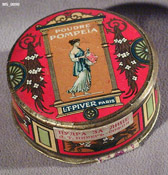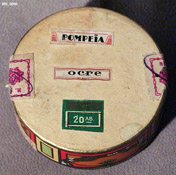Lightyears Collection
Pompeia
L.T. Piver
(1907)
Launched in 1907, Pomeïa was created for L.T. Piver by perfumer Pierre Armingeat (1874-1955). Pompeïa was among the first perfumes to make use of amyl salycilate, a synthetic discovered by Georges Darzens in 1896. With Darzen's assistance, amyl salycilate had previously been used in L.T. Piver's Le Trèfle Incarnat, introduced in 1898. Darzens described the scent of amyl salycilate as "the fragrance of flowering clover under the heat of August". Blogger Octavian presents this interpretation of the original Pompeïa (as opposed to the reformulation currently being marketed by L.T. Piver): Bergamot e.o. 260 Mixed as follows: (Octavio notes that Synarome's Bulgarome and hexyl cinnamic aldehyde did not exist in 1907.) |
|


Philip Goutell
Lightyears, Inc.




